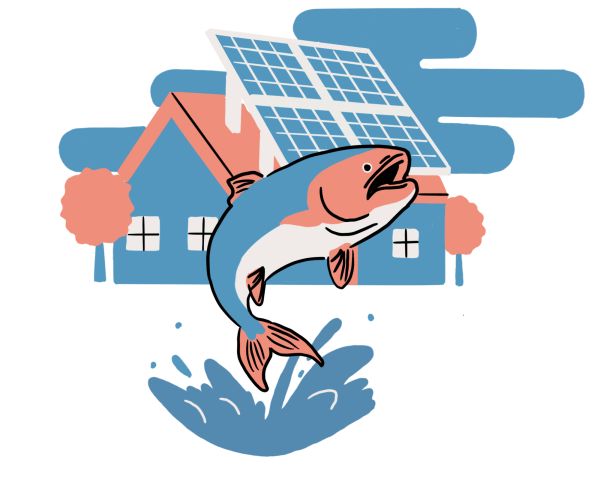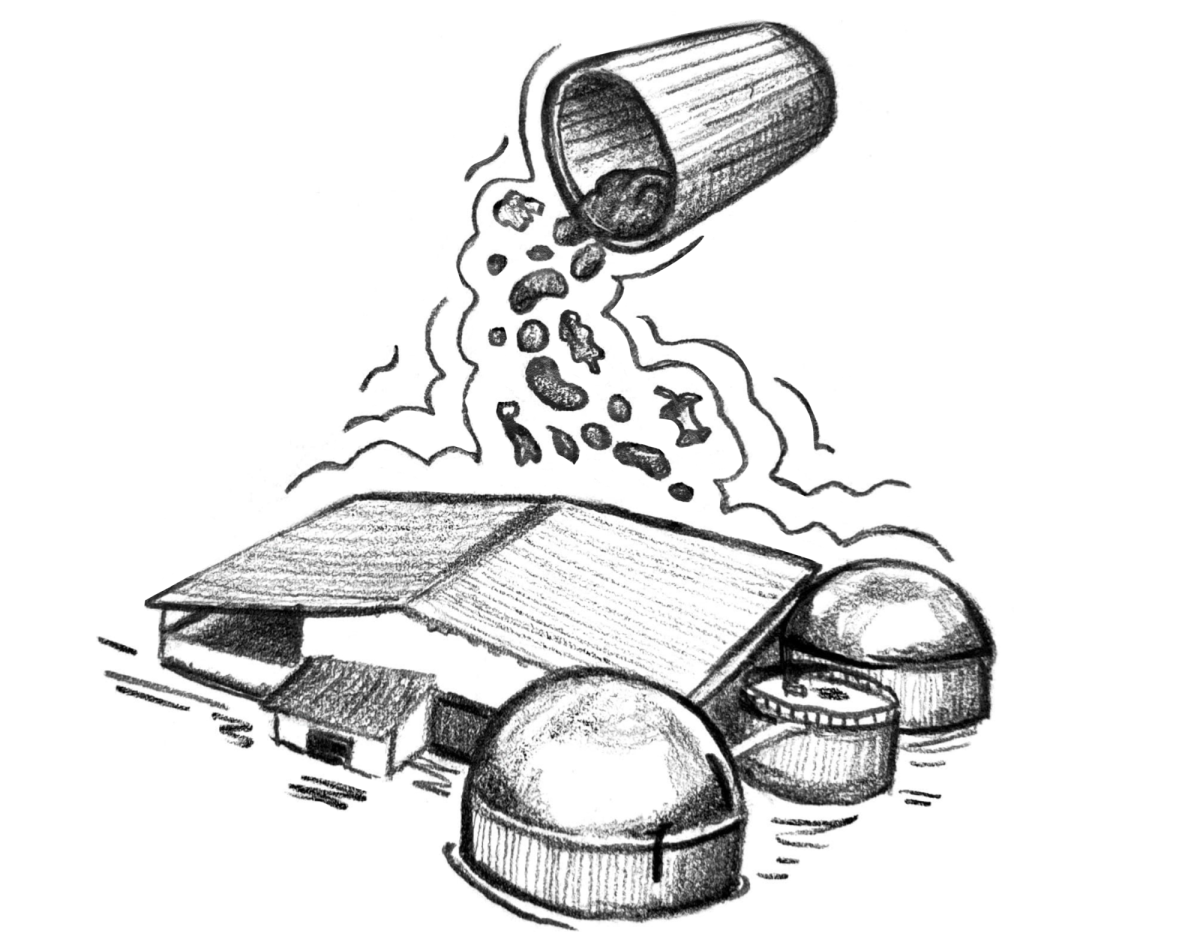
If you’ve lived in the Inland Northwest for any period of time, you’ve likely heard of proposals to breach the four lower Snake River dams. In 2021, Congressman Mike Simpson, a Republican from eastern Idaho, introduced a $34 billion proposal to remove the dams, citing the negative impacts on salmon populations and Indigenous communities. Further, the proposal includes heavy investments in agriculture, energy and transportation, all of which are common reasons to keep the dams intact.
Simpson’s proposal builds on research and support from other entities. Yet, despite comprehensive proposals, research and support from local, state, federal and tribal governments, there remain no plans for the removal of the dams. While a number of plans were put in motion during the Biden administration, recent changes in the federal government make dam removal even less likely.
However, as many government entities put dam breaching on the back burner, the Nez Perce are willing to make dams obsolete. Nimiipuu Energy, a tribal LLC tasked with replacing the energy capacity of the four lower Snake River dams with renewables, was established in 2022 and has been hard at work ever since.
Basil George, who works for Nimiipuu Energy, explained the objective of the project and the reason that it is called Project 5311.
“The number we got, 5311, came about by the Bonneville Power Administration. That’s how much power would be needed to get rid of those dams,” George said. “We came at this in a different way. Nobody had any previous solar experience when we started.”
Rather than rely on government proposals and non-binding resolutions, Project 5311 asserts that the energy that dams have the capacity to produce can be replaced by tribal communities themselves. In doing so, they take control of the debate about dam removal, establish leadership in the region, and make a real case for the removal of the dams.
Yet, as George notes, nobody at the Nez Perce had any experience with solar power before this project began.
“It was actually RevoluSun out of Boise that came and they said that they would train us and teach us to do solar. By the third day – with about 52 participants – we were putting solar on the roof. It was CARES [Coronavirus Aid, Relief, and Economic Security Act] money and also a prepaid PPA [Power Purchase Agreement] [that] paid for the first projects that we started,” George said.
RevoluSun states on their website that they offer “photovoltaic solar, Tesla Powerwall, Tesla Solar Roof, and EV charging” stations. This technology offers Nimiipuu Energy the capacity to produce renewable energy, but it also remains reliant on non-tribal entities, namely Tesla, which are under increasing scrutiny as of late.
However, while Project 5311 functions as a kind of sovereignty by reclaiming Indigenous access and control of natural resources, the goal is to garner broader support. Nikesa Aubertin, the grants and projects manager for Nimiipuu Energy, spoke on her role at the company.
“My position is mostly focused on searching for grants, writing grants, managing those, reporting and just finding projects that fit the scope of work for grants and creating the budgets for those,” Aubertin said. “Right now we have a project going on at the Red Wolf golf club, which is owned by the Nez Perce tribe. So what we’re doing is installing solar-covered parking and it’s our first project in the state of Washington, so that’s pretty much what we’re focused on right now.”
As Aubertin indicates, Project 5311 doesn’t function as a Nez Perce project alone. Grants from other entities and community partners are essential to the project. Without outside support, Project 5311 is unlikely to reach its renewable energy production goals.
“It’s a big endeavour. 5311 megawatts is huge, and you’re talking billions of dollars, so we knew right away that we couldn’t do that here ourselves. Well let’s do ten percent here on our reservation. We can handle ten percent and then we can partner with other tribes and build a microgrid,” George said.
Although the Nez Perce are taking the lead on this project, numerous stakeholders have an interest in the removal of the four lower Snake River dams. In 2021, the CTUIR General Council passed a resolution calling for the removal of the dams. Intertribal efforts to protect and restore salmon populations go back decades, including civil disobedience, which came to be known as “Fish Wars” and subsequent court rulings that reaffirmed treaty rights with regard to fishing. In 2025, the Nez Perce are asking for the same kind of intertribal support.
“For this project to succeed, tribes needed to get out of their norm,” George said. “We’ve trained the Coeur d’Alene tribe already and had them come down to do a week-long training…We get calls all the time from different tribes asking for us to come over and help them.”
Although Aubertin explained that federal grants are not a major source of funding, local solutions are even more important given the recent federal distaste for environmental protection broadly and dam removal specifically.
“Luckily, we have not had any issues. The few grants that we do have are out of the state of Washington, and I know we’re located in the state of Idaho, but with the Treaty of 1855, the state of Washington recognizes the Nez Perce tribe as a Washington State tribe,” Aubertin said.
Such a comment speaks to the continued access to grants that Nimiipuu Energy is likely to have, given Washington State’s support for renewable energy projects. Further, it emphasizes the power of tribal history. Given that today’s borders were not traditionally recognized by tribal communities, grant access is broadened, and treaties can be utilized across state governments.
Nimiipuu is also hoping that their project can transcend state and even national boundaries.
“It doesn’t have to be a local tribe. It can be anywhere in the United States and even Canada. They can join our microgrid,” George said.
Such a capacity expands the possibility for intertribal governance. Given the history of dam removals on the Elwha River in Washington and the recent breach of the four lower dams on the Klamath River, both of which have seen salmon populations flourish, there’s reason to work across tribal communities and find inspiration in other parts of the country.
“I know that since those dams have been removed, the native salmon that are returning to that area is crazy,” George said.
Project 5311 represents a different vision for dam removal than others. The project puts the Nez Perce in the driver’s seat due to a lack of motivation on the part of other entities. While the Nez Perce are central, George notes that this project presents an opportunity for so many others, even non-tribal entities.
“There’s a little town in Idaho called Riggins. They’re kind of at the end of a grid, so they lose power for days on end, and they have to keep freezers full of ice jugs because their power will go out for a significant amount of time…So we’ve been in conversations with them about joining our microgrid,” George said.
Whitman College and other regional institutions might not be in need of a power source like Riggins, Idaho, but they would benefit from working alongside tribal communities and helping progress their renewable energy commitment outlined in the most recent Campus Sustainability Plan.
Henry Roller, president of Salmon Conservation Club at Whitman College, sees renewable energy as a priority for the college.
“I’d like Whitman to invest more in renewable energy generation on campus or on our off-campus properties. This can take place via rooftop solar, which has the advantage of not disturbing undeveloped land, or wind towers in open fields. I believe Whitman’s financial resources position us to be able to invest in renewable energy generation much more than we are currently doing, and as a large institution, I see it as an obligation for Whitman,” Roller said.
Project 5311 is a tangible way for Whitman College to engage in renewable energy production. Additionally, George’s call for all partners to join the Nez Perce doesn’t just offer a renewable energy source, it establishes a commitment to tribal collaboration that is generative, not transactional. As George notes, eastern Idaho isn’t all that great for solar – or wind, for that matter – but other entities, including Whitman College, can fill those gaps to help reach the 5311 number.
While regional collaboration is extremely important, it’s also important to reaffirm the centrality of Indigenous perspectives in this endeavor. As James Paddlety, who works for Nimiipuu Energy, explained, although renewable energy is important, this project is bigger than that.
“Before the dams, we had a lot of cultural areas that are underwater now, like Celilo Falls…our ancestors went there to catch salmon for many years, and in my lifetime I would like to see those brought back and enjoyed by our future generations,” Paddlety said. “It’s a fight for being on our own utility, providing our own energy.”













lisa lybarger • May 10, 2025 at 6:38 pm
Wonderful idea if they can actually replace all BPA power, that sells all the way to the pacific ocean! Good luck, we all want help with reliable renewable power!